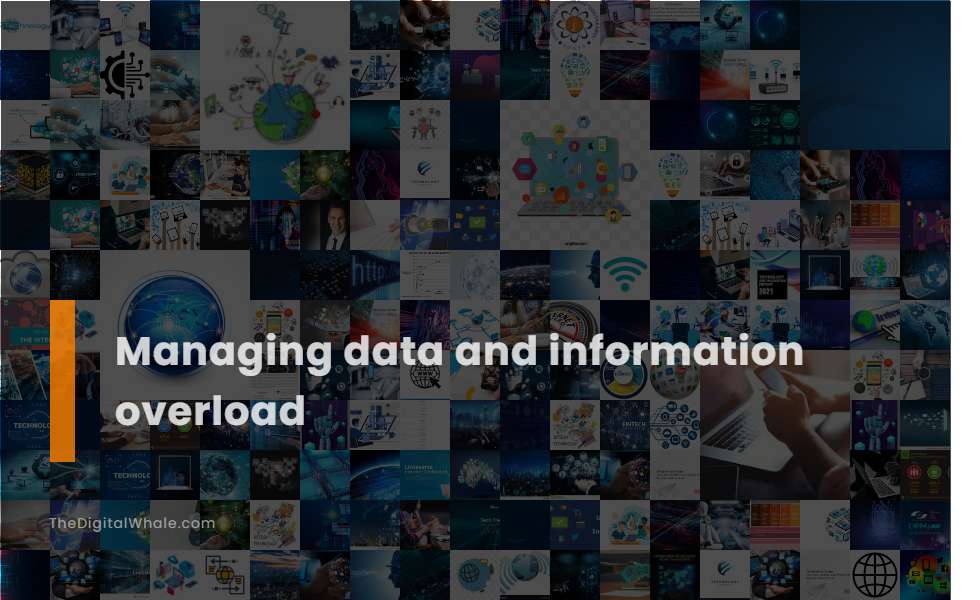Managing Data and Information Overload
Do you have any tips on how to avoid information overload in your designs? What helps me when I am overwhelmed with information? Let's find out more about Managing Data and Information Overload.

Digitize Your Records: Convert paper records to digital format for easier search and storage.
Digitizing records converts paper documents into a digital format, enhancing search and storage efficiency, improving productivity, and ensuring data security through encryption, access controls, and automated workflows. For more insights on how this can transform your organization's operations, explore more on Document Digitization at DocuWare. By embracing digital records, businesses can streamline their processes and secure sensitive information effectively.
Organize Your Records: Ensure records are properly categorized and accessible.
To manage information overload, it's crucial to organize your records by categorizing information using labels, employing bookmarking and note-taking tools, and creating a logical hierarchy of folders and files. By doing this, you ensure that all your information is centralized, making it simpler to retrieve what you need later. For more insights on how to tackle this issue effectively, check out the comprehensive guide on Information Overload. Implementing these strategies will lead to a more streamlined and efficient workflow.
Set Up User Access Management: Implement a system to manage and control access to data assets.
Implementing a system to manage and control access to data assets involves determining access requirements, developing an access control policy, choosing an access control model (such as DAC, MAC, RBAC, or ABAC), and implementing user authentication and authorization to ensure only authorized users can access specific data assets. When setting up user access management, it is crucial to discover and classify all data assets, assess current user permissions, and analyze compliance with data access policies. This ensures that access is granted based on predefined rules, such as role, department, or specific attributes. For a comprehensive understanding of these processes and methodologies, consider exploring this Data Access Control Guide to ensure robust management of your data access policies.
Invest in the Right Tools: Use knowledge-management software like Tettra, Confluence, and Slab to organize information.
Invest in tools like Tettra, Confluence, and Slab to manage data and information overload. These tools offer features such as centralized knowledge bases, robust search functions, real-time collaboration, and integrations with other productivity tools to enhance organization and accessibility of information. For instance, Tettra offers a comprehensive comparison between Slab and Notion, helping users choose the best solution to streamline their workflows and effectively manage team knowledge.
Prioritize and Set Goals: Define SMART goals to focus on relevant information.
To manage data and information overload, setting SMART goals helps IT teams focus on relevant information by making goals Specific, Measurable, Achievable, Relevant, and Time-bound, ensuring clarity and accountability in their efforts. This approach enables teams to channel their efforts effectively, track progress, and align their goals with broader organizational objectives. For more insights, visit the Smart Goals for Information Technology Teams page on Larksuite.
Related:
What are the implications of media and communication changes in Hong Kong? How do Hong Kong's communication media landscape change over time? Let's find out more about The Evolving Landscape of Email and Communication.
Filter and Organize Information: Use email rules, filters, and segmentation to manage incoming data.
To manage information overload, it is crucial to organize and filter your information effectively. This can be achieved by setting clear goals, limiting information-gathering time, and performing regular information audits to declutter unnecessary data and focus on relevant content. Using email rules, filters, and segmentation can help in managing incoming data. This involves being strategic about communications, segmenting content based on topic, priority, and employees' roles, and using Knowledge-Management Software to organize information efficiently.
Develop Access Control Policies: Establish policies defining who has access to which files and under what conditions.
Developing access control policies involves defining who has access to which files and under what conditions, including user identification, authentication, authorization based on the principle of least privilege, and auditing and monitoring to ensure compliance with security regulations and to protect sensitive data. For more in-depth information, you can refer to the Fundamentals of Data Access Management article on Dataversity's website, which provides comprehensive insights into these critical processes.
Create Centralized Information Hubs: Gather all necessary content in one place for easy access.
A Centralized Data Hub collects and manages information from multiple sources in a single location, enhancing data accuracy, security, and accessibility while also reducing data management costs. Similarly, a Centralized Knowledge Base organizes essential organizational information into a digital database, promoting collaboration, minimizing information overload, and offering easy access to vital documents, policies, and FAQs. Moreover, a centralized system such as Teamup streamlines information from various apps, mitigating information silos and simplifying access and management of data in context, which ultimately boosts productivity and minimizes errors.
Perform Regular Information Audits: Periodically review and declutter outdated or unnecessary information.
Performing regular information audits involves reviewing and decluttering outdated or unnecessary information to create space for fresh, relevant content, thereby reducing the chances of experiencing Information Overload.
Communicate Strategically: Be selective about what information is shared, how it is shared, and to whom.
To manage Information Overload, it is crucial to be strategic about communications, ensuring that only necessary information is shared, and that it is distributed to the right people in a segmented and centralized manner, avoiding unnecessary emails and CC'ing/BCC'ing. For more insights on this topic, visit EveryoneSocial to explore strategies that can help optimize communication efficiency.
Related:
How would congestion pricing work in New York City? What transportation technology will revolutionize our way of life? Let's find out more about Drive Less, Travel More - the Future of Transportation.
